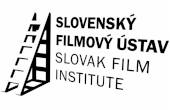In order to promote 3D films in Europe, the MEDIA programme of the European Commission opted to support, in 2011, the first edition of the 3D Film Mart, the first 3D film co-production market in Europe. This event was initiated by TWIST, the Walloon (Belgium) cluster for film and digital media, the University of Liège (Belgium) and peacefulfish (Germany), a company specialising in European cinema financing. The event aims to become a reference tool for all stakeholders of 3D cinema, in Europe and beyond.
3D Cinema: a real market
Reproducing man’s natural vision in the most accurate fashion possible, namely a vision in three dimensions, has always been a challenge for film makers. This research has yielded several types of 3D technologies, including stereoscopic 3D (S-3D). This technique is used in other fields such as the space and automobile industries, and today it is one of the chief successes of the film industry. Indeed, after several fruitless efforts, the seventh art has once more gambled on 3D since its latest revival, which began in 2006.
The first 3D film, “The Power of Love” was released in 1922, and 3D hit its heyday in the fifties with films such as Alfred Hitchcock’s “Dial M for Murder” and André de Toth’s “House of Wax”. 3D cinema came once again to the forefront in 2009 with James Cameron’s “Avatar”.
In barely three years, the North American box office has literally fallen for 3D. According to Screen Digest, 3D represents 19% of the total film revenue across the ocean by the end of 2011. Still according to Screen Digest, the number of 3D films offered in cinemas across North America has risen by 66% in 2011 compared to 2010.
This growth seems to exist in Europe and Asia as well, and today it is safe to say that 3D cinema has become a real market. Nearly 40 films have been announced for release in 2012, compared to 36 in 2011 and 22 in 2010. Cinema owners also understand where their interest lies and they have been investing massively in digital 3D equipment. It is estimated by Mediasalles, Texas Instrument and Screen Digest, that 50% of cinemas across the globe were digitally equipped in 2011, which means 18,500 cinemas in Europe. It is estimated that 57% of the digital cinemas are equipped with digital 3D.
Producing in 3D: a triple challenge for the producers
It is first and foremost a technological challenge, on the one hand because the production workflow has to be adapted to the technical constraints of 3D filming, and on the other hand because specific new tools had to be created.
Of course it is also an artistic challenge. 3D cinema uses its own cinematographic grammar, as confirmed by James Cameron in the newspaper Le Monde on 13th April 2012, speaking on the topic of Martin Scorsese’s “Hugo”: “He came to see me with his director of photography, Bob Richardson, to ask me about this format. They went to the trouble of learning 3D grammar. The result was impressive. You have a great director creating his film in 3D, incorporating this process into his directing style. This format is never askew on the story, on the contrary, it becomes one of the elements of the narrative. And yet, Scorsese’s style remains intact, so do his esthetical options. It is without a doubt the best film ever made in 3D.”
Finally, it is also an economic challenge. Indeed, not all traditional financing sources for a 2D film are adaptable to 3D films. The producers, for example, cannot rely on support from television chains, and must therefore apply a particular creativity to balance the financing of their 3D films.
3D Film Mart: the first co-production market for 3D films in Europe
4th & 5th December 2012 in Liège, Belgium
The 3D Film Mart is typical of the film markets dedicated to co-productions. However, its focus on three-dimensional films makes it unique in Europe and the world. It aims to bring together stakeholders in 3D cinematographic or audiovisual creation, ranging from production to distribution (or broadcasting), in order to make it possible for these players to set up financial structures for ongoing 3D projects, to make commercial sales or purchase transactions or simply to showcase 3D films or young directors.
As in 2011, the 3D Film Mart 2012 will make it possible for twenty project owners, selected by a professional jury, to present their film in its development stage in front of a panel composed of invited financing agents, investors and producers. Simultaneously, many meetings between 3D professionals, producers, directors, technicians, service providers, financing agents and investors will be organised to make it possible for people to move forward with their projects and develop a network of stakeholders specialised in this new genre.
The 3D Film Mart will also offer its participants several conferences on focused themes: how to monetize a 3D film, the contribution of 3D for author films or the future of 3D on television. The 3D Film Mart, organised in Liège, Belgium, will also highlight the Belgian film financing system, particularly its now famous “tax shelter”. This financing system, the best in Europe according to many cinema experts, generated an investment of 170 million Euros in the film industry in 2011.
The 3D Film Mart is more than a film market. Through 3D Stereo MEDIA, it also offers a 3D film festival, scientific and technical conferences, and a 3D academy aiming to initiate 2D professionals to the challenges of 3D. Last but not least, there is an Awards Ceremony where the Lumière Statuettes will be presented to the best 3D productions of the year from Europe, the Middle East and North Africa.
For more information:
3D Film Mart: www.3dstereomedia.eu/3d-film-mart
Important dates:
Deadline for the call for projects for 3D Film Mart 2012: 14th September 2012
Notification of the selected projects: 8th October 2012
3D Film Mart: 4th & 5th December 2012, Liège (Belgium)



















